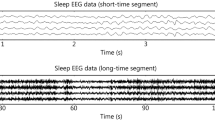
Overview
- Provides an overview of the principles and applications of computational EEG analysis techniques
- Describes cutting-edge techniques used for various applications including diagnosis of neurological disorder and psychiatric disease
- Written by established world-class researchers developing state-of-the-art techniques
Part of the book series: Biological and Medical Physics, Biomedical Engineering (BIOMEDICAL)
Access this book
Tax calculation will be finalised at checkout
Other ways to access
About this book
This book introduces and reviews all of the currently available methods being used for computational electroencephalogram (EEG) analysis, from the fundamentals through to the state-of-the-art. The aim of the book is to help biomedical engineers and medical doctors who use EEG to better understand the methods and applications of computational EEG analysis from a single, well-organized resource.
Following a brief introduction to the principles of EEG and acquisition techniques, the book is divided into two main sections. The first of these covers analysis methods, beginning with preprocessing, and then describing EEG spectral analysis, event-related potential analysis, source imaging and multimodal neuroimaging, and functional connectivity analysis. The following section covers application of EEG analysis to specific fields, including the diagnosis of psychiatric diseases and neurological disorders, brain-computer interfacing, and social neuroscience.
Aimed at practicing medical specialists, engineers, researchers and advanced students, the book features contributions from world-renowned biomedical engineers working across a broad spectrum of computational EEG analysis techniques and EEG applications.
Similar content being viewed by others
Keywords
Table of contents (10 chapters)
-
Front Matter
-
Introduction
-
Front Matter
-
Editors and Affiliations
About the editor
Prof. Chang-Hwan Im graduated from the School of Electrical Engineering of Seoul National University, Korea, in 1999. He received his MS and PhD from the same university in 2001 and 2005, respectively. He worked as a Post-doctor in the Department of Biomedical Engineering at the University of Minnesota, MN, USA, from 2005 to 2006. From 2006 to 2011, he worked for the Department of Biomedical Engineering at Yonsei University, Korea, as an Assistant/Associate Professor. Since 2011, he has been working for the Department of Biomedical Engineering at Hanyang University, Korea, as a Professor. His research interests cover various fields of computational neuroengineering, especially brain-computer interfaces, the diagnosis of neuropsychiatric diseases, noninvasive brain stimulation, bioelectromagnetic source imaging, neuromarketing, and dynamic neuroimaging. He has authored more than 150 articles in peer-reviewed international journals. He is currently a Director of the Computational Neuroengineering Laboratory of Hanyang University, and he is Associate Editors of Biomedical Engineering Letters, Experimental Neurobiology, and Brain-Computer Interfaces.
Bibliographic Information
Book Title: Computational EEG Analysis
Book Subtitle: Methods and Applications
Editors: Chang-Hwan Im
Series Title: Biological and Medical Physics, Biomedical Engineering
DOI: https://doi.org/10.1007/978-981-13-0908-3
Publisher: Springer Singapore
eBook Packages: Physics and Astronomy, Physics and Astronomy (R0)
Copyright Information: Springer Nature Singapore Pte Ltd. 2018
Hardcover ISBN: 978-981-13-0907-6Published: 28 August 2018
Softcover ISBN: 978-981-13-4529-6Published: 30 January 2019
eBook ISBN: 978-981-13-0908-3Published: 16 August 2018
Series ISSN: 1618-7210
Series E-ISSN: 2197-5647
Edition Number: 1
Number of Pages: XII, 228
Number of Illustrations: 23 b/w illustrations, 36 illustrations in colour
Topics: Medical and Radiation Physics, Biomedical Engineering and Bioengineering, Imaging / Radiology, Neurology, Computational Science and Engineering



